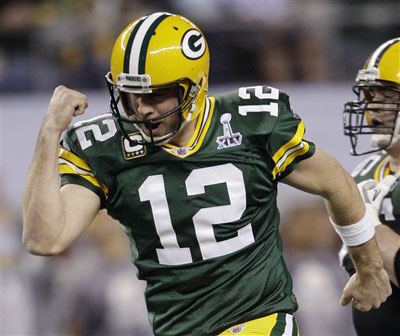
Probably the riskiest deserving first round pick possible
Posted by Kip Earlywine
Can you believe the draft begins this Thursday? There isn’t much time left, so I figured now would be a good time to talk about which positions are the safest bets in the first round. Here is a chart, though a couple years old, that tracks the success rate by position both by being a long term starter and also by becoming a star player. It covers data from 1997 to 2008.
Excluding kickers (heh), the safest positions for finding a long term starter are center (100%), guard (100%), safety (91%), linebacker (83%), defensive tackle (83%), defensive end (79%) and tackle (73%).
The worst positions for finding at least a long term starter are quarterback (44%), wide receiver (49%), tight end (50%), cornerback (56%), and running back (57%).
Finding a franchise quarterback is the single most difficult and important task for an NFL front office. Even though a 44% rate is the worst among every position, that 44% rate far exceeds the rate of any round thereafter.
Considering this, you would expect quarterback to finish very low in terms of finding stars, but just the opposite: 25% of this group go on to become franchise quarterbacks. Or to look at it another way, for every 8 first round quarterbacks that start long term, 5 are star players. That’s the highest rate among successful starters at any position.
So what are the best positions when considering both starter potential and the odds of becoming a star? Guard, safety, linebacker top the list, with defensive end being an honorable mention.
The worst? Tight end and cornerback stand out quite a bit. Corner is tied for 3rd worst for percentage of star players and is 4th worst for overall ability to produce a starter. What’s even more alarming about the corner statistic is how many successful corners come out of the top half of the first round. As Mel Kiper recently cited, 21 of the last 24 corners taken in the top half of the first round have been at least somewhat successful. That’s amazing, and it really paints a grim picture for corners who are taken later in the first.
I think that jives with this year’s draft as well. Patrick Peterson is a top 10 lock and about as close to can’t miss as it gets. He’s this year’s Joe Haden or Darrelle Revis. Prince Amukamara? He’s pretty much bombed drills at the combine and sorely lacks some of the most basic athletic qualities to play the position at the NFL level. Maybe he’s still drafted as a corner, but if he is, it will be later in the first and it would be a very risky proposition to keep him at corner. Then you have Jimmy Smith, who has all the physical talent to be a top 10 pick but has a rap-sheet and work-ethic reminiscent of infamous flame-out Maurice Clarett. Considering the innate risk of the cornerback position coupled with that, I would nominate Smith as the riskiest first round prospect- that is unless you consider Andy Dalton or Christian Ponder worthy 1st round guys. (I don’t).
So its with this in consideration that I have very mixed feelings about Seattle drafting Jimmy Smith. If Seattle selects Smith 25th overall, though I wouldn’t pull the trigger myself, I would support their decision and I wouldn’t hate the pick. Finding good starting corners is almost as hard as finding good starting quarterbacks, and in later rounds it gets even harder. Seattle badly needs quality at the corner position and putting off addressing the issue will have consequences. Smith has the base of talent to be just like those highly successful corners taken earlier, its just an issue of being motivated and staying on the straight and narrow. If anyone can do that, Pete Carroll can.
On the other hand, if Smith busts especially for off the field reasons, its going to look very obvious in retrospect won’t it? Smith has two felonies in his past, displayed (to my eye) a regular habit of cruising by in games, and didn’t work out for at least two weeks before the combine, presumably because he didn’t care about being his best. I don’t care too much about him lying in interviews, the other stuff is what concerns me more because of the behavior patterns it indicates. I don’t mind rooting for degenerates like Randy Moss or Brandon Marshall, because at least they bring it on Sundays and compete Monday through Friday like champions. With Smith, I’m not so much worried about him getting arrested with enough guns for a Mexican standoff in his pickup truck or getting stabbed by his wife, as much as I am worried about him just not caring enough to reach his potential.
If Mike Pouncey is there at #25, (I highly doubt it), then he would be the best pick in my view. Not just because we desperately need help at guard, and not just because he’s the twin brother of a highly successful NFL interior lineman, but because guard (usually a position addressed where we are picking) is the safest pick in the first round and also one of the best for finding a star player.
Similarly evaluating risk/reward for Locker/Kaepernick is probably another post in itself. For now I’d say that I’d endorse either at #25, though with Kaepernick admittedly I’d cringe a little bit after thinking of him as a late 2nd rounder for so long.







